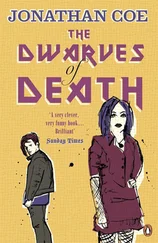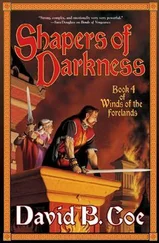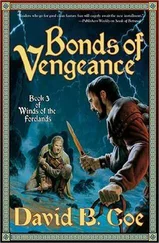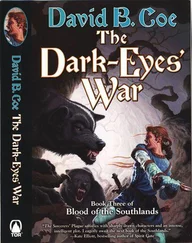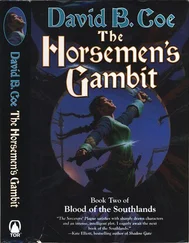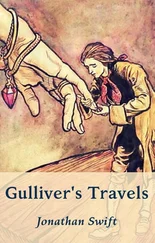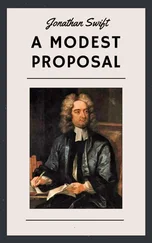Jonathan Coe - Number 11
Здесь есть возможность читать онлайн «Jonathan Coe - Number 11» весь текст электронной книги совершенно бесплатно (целиком полную версию без сокращений). В некоторых случаях можно слушать аудио, скачать через торрент в формате fb2 и присутствует краткое содержание. Год выпуска: 2015, Издательство: Penguin, Жанр: Современная проза, на английском языке. Описание произведения, (предисловие) а так же отзывы посетителей доступны на портале библиотеки ЛибКат.
- Название:Number 11
- Автор:
- Издательство:Penguin
- Жанр:
- Год:2015
- ISBN:нет данных
- Рейтинг книги:4 / 5. Голосов: 1
-
Избранное:Добавить в избранное
- Отзывы:
-
Ваша оценка:
- 80
- 1
- 2
- 3
- 4
- 5
Number 11: краткое содержание, описание и аннотация
Предлагаем к чтению аннотацию, описание, краткое содержание или предисловие (зависит от того, что написал сам автор книги «Number 11»). Если вы не нашли необходимую информацию о книге — напишите в комментариях, мы постараемся отыскать её.
It's about the legacy of war and the end of innocence.
It's about how comedy and politics are battling it out and comedy might have won.
It's about how 140 characters can make fools of us all.
It's about living in a city where bankers need cinemas in their basements and others need food banks down the street.
It is Jonathan Coe doing what he does best — showing us how we live now.
Number 11 — читать онлайн бесплатно полную книгу (весь текст) целиком
Ниже представлен текст книги, разбитый по страницам. Система сохранения места последней прочитанной страницы, позволяет с удобством читать онлайн бесплатно книгу «Number 11», без необходимости каждый раз заново искать на чём Вы остановились. Поставьте закладку, и сможете в любой момент перейти на страницу, на которой закончили чтение.
Интервал:
Закладка:
The eighty-minute flight went by all too quickly. They landed just a couple of miles from the city centre at another small airfield. A driver was waiting to pick her up and take her to the Beau-Rivage Palace, where Madiana and the rest of the family were having lunch. Their party was occupying two tables: a children’s table, where Grace and Sophia were joined by two boys and a girl of similar age, and an adults’ table, where Sir Gilbert and Lady Gunn sat with another couple, a man Rachel did not recognize, and the ubiquitous Frederick Francis himself, who gave her a little conspiratorial wave (which she ignored) as a waiter led her towards them. Both tables had a view across the empty hotel terrace towards Lake Geneva. In the furnishings and the understated conversation of the other diners there was an atmosphere of cold, clinical elegance.
‘Rachel, how good of you to join us,’ said Madiana, half rising from her seat to shake her hand. ‘You’re sitting with the children. Order whatever you want from the menu. All their books are ready for you. See if you can make sense of these ridiculous equations.’
Thereby dismissed from the main table, Rachel took her seat next to the twins and looked quickly through the menu. She had noticed that the restaurant boasted two Michelin stars, but instead of langoustine à la plancha or Challans duck with beetroot confit, all of the children had asked for cheeseburgers and chips. She ordered a cheese fondue ravioli without really thinking about it, and then turned her attention to the maths. All the girls had been asked to revise were some quite simple linear equations and she was able to bring them both up to speed within about ten minutes. She wrote out six more equations to test them and they both got full marks, so after that she was confident her job was done. She ate the rest of her meal in silence, looking out over the lake, and listened to the stilted chatter of the children: the two boys and their sister appeared to be from a Swiss family and spoke a mixture of perfect French and perfect English, but they didn’t seem to have much to say to the Gunn twins, who in any case were more interested in their iPhones.
‘So, did the girls finish their maths?’ Madiana asked, at the end of the meal.
‘Yes, no problem. They’re primed and ready to go.’
‘Good. Well, Pascale has invited us back to her apartment for tea.’ Rachel thought, at first, that she might be included under the umbrella term ‘us’, but her employer’s next words disabused her of that idea. ‘You have three hours in which to amuse yourself. The driver will pick you up here and then you and the girls and Mr Francis will all travel home together.’
‘Fine,’ said Rachel. ‘Do you happen to know if there’s a cashpoint nearby? I didn’t have time …’
‘Oh. Of course. Take this,’ said Madiana, handing her two fifty-franc notes. ‘We’ll settle it up later.’
Rachel thanked her, allowed a waiter to help her on with her overcoat, and then went outside to become acquainted with the streets of Lausanne.
*
She walked for about an hour, at first by the side of the lake and then through the wide, almost empty boulevards of the city centre, which seemed modern and comfortable but completely without character. Even though Lausanne was a lot closer to London than the Kruger national park, and the weather was impeccably British (cold and grey), she felt just as disorientated by this abrupt transplantation to an unexpected country. She thought about calling Jamie, wanting to hear his familiar voice again, but she wasn’t sure what the cost of the call would be, and didn’t want to risk it.
Another ten minutes’ aimless walking brought her to the Avenue Bergières, where she paused outside the entrance to a museum. What appeared to be a fairly modest private house opposite the Palais de Beaulieu promised its visitors something called the ‘Collection de l’Art Brut’. Rachel had never heard the term before, but her attention was drawn by the posters outside, depicting strange animals and grotesque landscapes in bright, mesmerizing colours. Venturing inside, having handed over her money and picked up a programme, she read the following note from the museum’s curator: ‘In 1945, Jean Dubuffet decided upon the term “Art Brut” to designate a creative output by people who are self-taught, who work outside of any institutional framework, beyond all rules and all artistic considerations. For the most part, these are solitary people, persons living on the fringes of society or committed to psychiatric hospitals.’
Even this definition did not prepare her for the surprises, the infinite variety, the disturbing revelations that the museum itself held in store. For the next hour and a half, Rachel wandered through a dream world, a chaos of surreal visions and nightmarish imaginings. Distorted human figures were rendered in stark, primitive shapes and outlines. Hallucinatory creatures, half-man and halfanimal, reared up on sheets of paper on which every other inch of available space had been scribbled over with minute fragments of text whose meaning could be fathomed only by the artist. Fantastically detailed, wildly colourful pointillist canvases challenged the viewer to decide whether she was looking at something entirely abstract or, in some occult, coded way, representational. Weird political slogans were juxtaposed with deformed nudes or hideously lifelike faces constructed of found materials such as coral or sea-shells. A terrifying sculpture of an animal head boasted real, jagged and blackened teeth and a sharpened, lethal-looking horn protruding from its vulpine nose. One artist’s contribution consisted of nothing but endless letters of legal complaint and recrimination, written on massive sheets of paper with no margins and tiny, insistent handwriting, the words smothering and stumbling over each other to create (as the catalogue put it) ‘the impression of a graphic logorrhoea’.
To some, perhaps, this would seem to be the world of the madhouse. To Rachel, the museum’s contents felt as sane and as logical as anything she had seen in the last four months. She felt immediately, profoundly at home.
The museum housed a permanent collection but there was also a temporary exhibition in a room to the rear. This space was devoted, at the moment, to the ‘Bestiary’ of an artist from Barcelona called Josep Baqué.
Baqué, it seemed, had spent his peripatetic early life in Marseilles, DÜsseldorf and l’Avesnois — carving gravestones, among other things — but had returned to Barcelona in 1928 and passed the remaining forty years working there as a traffic policeman. During that time it was known that he made drawings, some of which were sought after by collectors, although, ‘ modeste jusqu’à l’excès ’, he always refused to sell them. Until his death in 1967, however, nobody knew the extent of his productivity: his family discovered 1,500 drawings of every shape and size, almost all of them showing mythical or semi-mythical beasts rendered in vivid colours and crude but detailed, even obsessive brushwork. Here were dragons and lizards; mutant hybrids of the horse and the flamingo; sea-snakes, turtles and multicoloured fish with looks of haunted sadness in their eyes; strange insects — beetles with butterfly wings, centipedes with bulging red lips and the teeth of a hydra. And here, too, were spiders.
Rachel had been on the point of leaving the museum, exhausted by the intensity of the experience it offered, when she came upon Josep Baqué’s spiders. And she looked on them, at once, with a shock of recognition. For more than ten years now, wherever she went, she had kept with her the playing card which had been given to her by Phoebe, the ‘Mad Bird Woman’, at the foot of the Black Tower in Beverley. It was the card that Alison had discovered, discarded and lost, in the woodland one evening; one of a pair belonging to Phoebe, and which she had given to Lu, the Chinese vagrant to whom she had briefly offered shelter in that long-lost summer, the summer of 2003. The picture on this playing card showed a spider, which Rachel had always considered to be a horrific thing: standing upright on two of its legs, and raising the others fiercely in the air as if challenging someone to a fight. And here it was again. Exactly the same. How was this possible? How could this gruesome, almost stomach-turning illustration — which could be dated, according to the catalogue, no more precisely than ‘ entre 1932 et 1967 ’ — have found its way into a pack of Pelmanism cards which had once belonged to Phoebe’s parents? Rachel had no idea. And yet the proof was here. She looked at this painting, framed, numbered, labelled, hanging on the wall of a museum in Switzerland to which the strangest of circumstances had brought her, and knew that she was staring at one of the icons, one of the most formative images, of her own past life. Here, taking its place among all the other works which today appeared to her as pure howls of anguish; howls of terrible beauty, born of the poverty and isolation of the dispossessed.
Читать дальшеИнтервал:
Закладка:
Похожие книги на «Number 11»
Представляем Вашему вниманию похожие книги на «Number 11» списком для выбора. Мы отобрали схожую по названию и смыслу литературу в надежде предоставить читателям больше вариантов отыскать новые, интересные, ещё непрочитанные произведения.
Обсуждение, отзывы о книге «Number 11» и просто собственные мнения читателей. Оставьте ваши комментарии, напишите, что Вы думаете о произведении, его смысле или главных героях. Укажите что конкретно понравилось, а что нет, и почему Вы так считаете.

